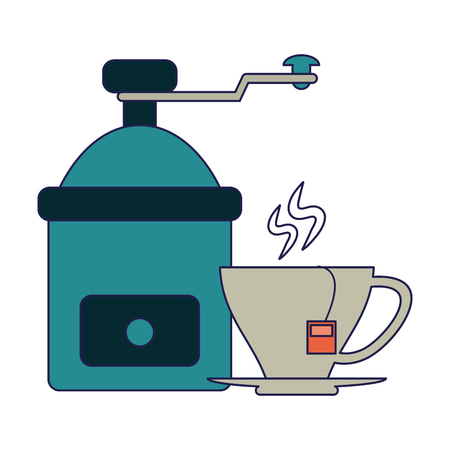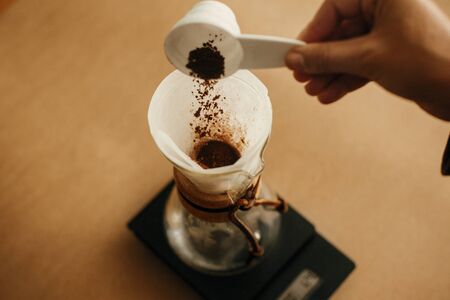1. Introduction: The Cultural Bedrock of Tea
For centuries, tea has served as the cornerstone of British social and cultural life, weaving itself into the very fabric of the nation’s identity. From stately afternoon teas in grand drawing rooms to humble cups shared in bustling kitchens, tea rituals have shaped daily routines and milestones alike. More than just a beverage, tea symbolises hospitality, comfort, and civility—its presence at family gatherings and business meetings alike underscoring its universal appeal. The ritual of “putting the kettle on” is as much about forging connections as it is about quenching thirst, representing a time-honoured response to both joy and adversity. Embedded in historical events and immortalised in literature, tea’s role extends far beyond refreshment; it is an enduring emblem of British tradition that continues to anchor communal moments and individual solace alike.
2. The Arrival of Coffee: Early Encounters and Coffeehouses
Coffee’s journey to the United Kingdom is steeped in intrigue and global trade. Its first significant arrival was during the mid-17th century, when merchants and travellers returning from the Ottoman Empire and beyond introduced this novel beverage to British shores. Unlike tea, which would later dominate the cultural landscape, coffee’s initial reception was marked by curiosity and a sense of novelty among London’s elite.
The establishment of the first coffeehouse in Oxford around 1650, soon followed by London’s own venues such as Pasqua Rosée’s in St Michael’s Alley, Cornhill, signalled the beginning of an urban transformation. These early coffeehouses rapidly became hubs for intellectual discourse, commerce, and even political agitation—a stark contrast to the more insular drinking habits associated with alehouses or private parlours.
The Unique Culture of Coffeehouses
Unlike today’s casual cafés, 17th-century British coffeehouses were often referred to as “penny universities” due to their democratic nature; for the price of a penny, anyone could enter, enjoy a cup of coffee, and partake in conversations that spanned literature, science, politics, and trade. This environment fostered an unprecedented mingling of social classes and professions.
Key Features: Coffeehouse Culture vs. Traditional Tea Drinking
| Aspect | Coffeehouses | Traditional Tea Habits |
|---|---|---|
| Social Setting | Public, communal, intellectually vibrant | Private parlours or aristocratic drawing rooms |
| Beverage Symbolism | Modernity, debate, innovation | Refinement, tradition, social order |
| Accessibility | Open to all social classes (for a fee) | Primarily elite or family-centred gatherings |
| Political Influence | Centres for discussion and dissent | Generally apolitical settings |
Coffeehouses as Catalysts for Change
This unique blend of openness and intellectual stimulation made coffeehouses fertile ground for new ideas—ranging from scientific theories discussed by members of The Royal Society to the formation of financial institutions like Lloyd’s of London. The lively atmosphere encouraged pamphleteering and debates that often spilled over into public policy and press freedoms.
The early encounters with coffee thus not only challenged prevailing tastes but also began to redefine the British public sphere. As we trace these roots, it becomes clear that the rise of coffeehouses laid critical groundwork for later shifts in both beverage preferences and societal norms across the UK.

3. Industrialisation and Changing Habits
The advent of the Industrial Revolution in the late 18th and early 19th centuries marked a seismic shift in British society, fundamentally transforming daily life, work routines, and even beverage preferences. Factories began to dominate city landscapes, with urbanisation drawing workers from rural villages into bustling towns. The rigid schedules of factory life replaced the more flexible rhythms of agricultural work, compelling individuals to adapt to long hours and regimented shifts. In this context, the demand for stimulating drinks soared. While tea remained popular for its soothing qualities and ritualistic comfort, coffee’s invigorating properties became increasingly attractive to labourers and clerks who needed to remain alert during extended working hours. Coffee houses, which had flourished earlier among intellectuals and merchants, now found new patrons among the urban working class. The quick preparation time and energising effect of coffee made it an ideal companion for those facing the relentless pace of industrial-era Britain. This period not only redefined working habits but also laid the groundwork for coffee’s growing presence in British daily life—a testament to how societal change can reshape even the most ingrained cultural preferences.
4. Globalisation, Trade, and the British Palate
The transformation of coffee from an exotic luxury to a staple in British culture was intricately tied to globalisation and evolving trade practices. As Britain expanded its commercial reach during the late 19th and 20th centuries, coffee’s journey into the UK market mirrored broader shifts in international trade dynamics. The growing interconnectedness between continents enabled a steady and diverse influx of coffee beans, introducing Britons to new flavour profiles that contrasted sharply with traditional tea.
Import and Export: The Changing Landscape
Historically, tea dominated import charts as the nation’s preferred brew. However, as shipping technologies improved and colonial networks evolved, coffee imports surged. British merchants began sourcing beans from regions such as Brazil, Ethiopia, and Vietnam, creating a competitive environment for both beverages. The table below highlights key changes in UK beverage imports over time:
| Year | Tea Imports (tonnes) | Coffee Imports (tonnes) |
|---|---|---|
| 1900 | 100,000 | 10,000 |
| 1950 | 120,000 | 30,000 |
| 2000 | 85,000 | 80,000 |
| 2020 | 70,000 | 110,000 |
The Evolution of Accessibility and Taste Preferences
As coffee became more accessible through supermarkets and high street cafés, it started reshaping the average British palate. Coffee chains such as Costa and Pret A Manger not only popularised espresso-based drinks but also introduced consumers to single-origin beans and artisanal roasting techniques. This democratisation of coffee contributed to a broader appreciation for nuanced flavours—ranging from fruity Ethiopian Yirgacheffe to rich Brazilian Santos—encouraging experimentation beyond the familiar comfort of English Breakfast tea.
The Role of Trade Agreements and Roasting Innovation
The UK’s participation in global trade agreements facilitated smoother import processes for green coffee beans. Roasters in London, Manchester, and Edinburgh could now source fresh crops year-round, experimenting with roast profiles tailored to local preferences. The shift towards lighter roasts amplified subtle origin characteristics, while darker roasts catered to those seeking bold intensity—a parallel evolution reminiscent of the earlier tea revolution.
A New Era for the British Brew Cup
This convergence of global supply chains and shifting consumer expectations has firmly established coffee as a worthy rival to tea in Britain’s daily rituals. With access to a wider range of origins and roast styles than ever before, today’s British drinker can curate their own experience—choosing between tradition and innovation with each cup poured.
5. Modern Coffee Culture: Cafés, Chains, and Craft Movements
The transformation of the UK’s coffee culture over the past few decades marks a striking chapter in the nation’s ongoing beverage evolution. Once dominated by tea rooms and the ritual of afternoon tea, British high streets now feature an impressive array of coffee chains and independent cafés, each contributing to the shifting preferences of modern consumers.
The Rise of High-Street Coffee Chains
By the late 20th century, international giants such as Costa Coffee, Starbucks, and Caffè Nero had firmly established themselves across the UK. These brands did more than serve espresso-based drinks; they redefined the British social landscape. The “coffee shop” became a familiar urban hub—a place not just to grab a drink but to work remotely, meet friends, or simply unwind. The consistent quality, comfortable settings, and recognisable branding played a crucial role in making coffee an everyday staple for millions.
Independent Cafés: A Personal Touch
Alongside corporate chains, there has been a resurgence of independent cafés throughout cities and towns. These establishments often pride themselves on unique character, personalised service, and locally sourced ingredients. They offer British consumers an alternative to mass-market chains—a space for community engagement and discovery. Many independents focus on artisan brewing methods, showcasing single-origin beans and innovative roasting profiles that appeal to discerning palates.
The Specialty Coffee Movement
The specialty coffee scene has flourished in the UK, particularly in metropolitan areas like London, Manchester, and Edinburgh. Roasteries and baristas now treat coffee with the same reverence historically reserved for fine wine or craft beer. This movement places emphasis on traceability, sustainability, and precision—everything from farm-to-cup transparency to meticulous brewing techniques. As a result, British coffee enthusiasts have become increasingly knowledgeable about origin, varietal, processing methods, and flavour notes.
Together, these shifts have helped coffee challenge—and at times surpass—tea’s position as Britain’s favourite brew. Today’s café culture is diverse and dynamic: a blend of global trends and distinctly British sensibilities that continues to reshape how people across the UK experience their daily cup.
6. The Ongoing Brew Battle: Coffee Versus Tea Today
The centuries-long rivalry between coffee and tea in the UK has evolved into a nuanced battle of preferences, shaped by shifting social norms and consumer habits. While tea remains deeply entrenched in British culture—often considered the epitome of comfort and tradition—coffee has surged in popularity, particularly among younger generations who crave both convenience and continental sophistication.
Modern Consumption Trends
Recent market analysis reveals that coffee consumption continues to rise, with Britons now drinking over 95 million cups daily. Independent cafés, high-street chains, and at-home brewing innovations have democratised access to speciality coffee, transforming it from a luxury indulgence into an everyday ritual. Meanwhile, traditional tea drinking still commands respect, but its growth has plateaued as herbal infusions and novel blends attempt to recapture public interest.
Generational Preferences
A significant generational divide is evident in beverage choice. Millennials and Gen Z are more likely to opt for coffee, attracted by its variety—from flat whites to cold brews—and the vibrant café culture that surrounds it. In contrast, older generations often remain loyal to their beloved cuppas, upholding the time-honoured custom of ‘tea time’ as a daily pause for reflection and connection.
Evolving Social Status
The status of each drink has also shifted. Coffee now symbolises cosmopolitanism and productivity; it’s the fuel for modern life, business meetings, and creative sessions. Tea retains its association with hospitality and calm—a gentle reminder of Britain’s rich heritage. This duality means that both beverages occupy unique spaces within UK society, coexisting yet constantly competing for the nation’s affection.
In conclusion, the contemporary landscape reflects a delicate balance: tea may still be synonymous with British identity, but coffee has firmly established itself as a contender for the crown. As tastes continue to diversify and cultural influences reshape daily rituals, the brew battle shows no sign of abating—ensuring that both drinks will remain central to British life for years to come.


